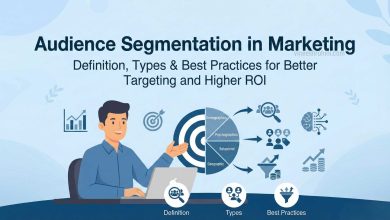The Art and Science of Advertisement Layout: Crafting Effective Visual Narratives 2023
Advertisement layout
A critical facet of the advertising industry, serves as the cornerstone upon which successful advertising campaigns are built. The arrangement of elements within an advertisement, from text and images to colors and whitespace, plays a pivotal role in capturing the audience’s attention, conveying the intended message, and ultimately driving consumer action. In this comprehensive essay, we will delve into the intricacies of advertisement layout, exploring its significance, key principles, and the impact it has on the success of advertising campaigns.
I. Understanding Advertisement Layout
1.1 Definition and Importance of Advertisement layout
Advertisement layout refers to the strategic arrangement of visual and textual elements within an advertisement to communicate a specific message effectively and engage the target audience. It serves as the bridge between the creative concept and the audience, making it a pivotal element of any advertising campaign.
Advertisement layout is of paramount importance for several reasons. Firstly, it determines the visual appeal of the ad, making it aesthetically pleasing and eye-catching. Secondly, it directly influences the ad’s readability and comprehension, ensuring that the message is conveyed clearly. Lastly, a well-designed layout can evoke emotions and create a memorable impression, which is crucial in a competitive market.

Also Read…. Free Online Advertising: Top 10 Platforms
1.2 Historical Evolution of Advertisement layout
The history of advertisement layout is rich and diverse, reflecting the evolution of societal norms, technology, and design trends. From the early days of print advertising in newspapers to the digital age of social media and online banners, the principles of effective layout have adapted and transformed.
The birth of modern advertisement layout can be traced back to the late 19th and early 20th centuries when advertising agencies recognized the need for professional design. Pioneers like J. Walter Thompson and William Randolph Hearst hired artists and designers to create visually appealing layouts, setting the stage for the industry’s growth.
II. Key Principles of Advertisement Layout
2.1 Visual Hierarchy | Advertisement layout
One of the fundamental principles of advertisement layout is establishing a clear visual hierarchy. This entails prioritizing elements based on their importance and guiding the viewer’s eye through the content. Typically, the most critical information is placed prominently, while secondary information is arranged in a logical sequence.
Visual hierarchy relies on the effective use of size, color, contrast, and typography to direct attention. Headlines are often larger and bolder, followed by subheadings, body text, and finally, a call to action.
2.2 Balance and Symmetry | Advertisement layout
Achieving balance and symmetry in advertisement layout is crucial for creating visual harmony. An unbalanced layout can be jarring and confusing to the viewer. Two main types of balance are symmetrical and asymmetrical. Symmetrical layouts are mirror images, while asymmetrical layouts create balance through contrast.
The choice between these two approaches depends on the message and the brand. Symmetry is often associated with stability and tradition, while asymmetry can convey creativity and innovation.
Buy Now : Facebook Ads Mastery Course ⤵️

2.3 Typography and Fonts | Advertisement layout
Typography plays a vital role in advertisement layout. Selecting the right fonts and using them effectively can greatly impact the ad’s readability and emotional appeal. Fonts can evoke various emotions, from elegance to playfulness.
Consistency in font usage is essential to maintain a cohesive and professional appearance. Headlines, body text, and captions should all be carefully chosen to complement the overall design.
2.4 Color Psychology | Advertisement layout
Colors are powerful tools in advertisement layout. They can convey emotions, establish brand identity, and attract attention. Different colors evoke different psychological responses, and advertisers strategically use these associations to influence consumer behavior.
For instance, red is often associated with excitement and passion, making it suitable for promotions and sales. Blue, on the other hand, conveys trust and reliability, making it a popular choice for financial and healthcare advertisements.
III. Elements of Advertisement Layout
3.1 Imagery and Photography | Advertisement layout
Images and photographs are essential elements in advertisement layout, as they can convey emotions and messages that words alone may struggle to express. High-quality, relevant visuals can captivate the audience and drive home the intended message.
The choice of imagery should align with the product or service being advertised and the target audience. Additionally, the composition, lighting, and color schemes of the visuals must harmonize with the overall layout.
3.2 White Space | Advertisement layout
White space, also known as negative space, is the area of an advertisement that is devoid of text or images. It plays a crucial role in layout design by providing visual breathing room and enhancing readability.
Properly utilized white space guides the viewer’s eye, emphasizes key elements, and prevents the layout from appearing cluttered. It is a fundamental aspect of minimalist and modern design trends.
IV. Advertisement Layout in Various Media
4.1 Print Media in Advertisement layout
Advertisement layout in print media, such as newspapers and magazines, has a long-standing tradition. It requires careful consideration of page size, column width, and typography. Print layouts often feature high-quality images and catchy headlines to capture attention quickly.
4.2 Digital Media in Advertisement layout
In the digital age, advertisement layout has expanded to include various online platforms, including websites, social media, and mobile apps. Digital layouts must consider responsive design, ensuring that ads display correctly on different screen sizes and orientations.
Interactive elements, such as clickable buttons and animations, have also become integral to digital advertisement layouts, enhancing user engagement.
Buy Now : Facebook Ads Mastery Course ⤵️

V. The Psychology of Advertisement Layout
5.1 Cognitive Processing in Advertisement layout
Understanding how the human brain processes visual information is crucial in designing effective advertisement layouts. Cognitive psychology principles, such as the Gestalt principles of perception, help designers create layouts that align with the viewer’s natural cognitive processes.
5.2 Emotional Appeal in Advertisement layout
Advertisement layout can evoke emotions and shape brand perception. Emotional design, a concept rooted in psychology, leverages colors, imagery, and typography to create emotional connections between the audience and the brand. For example, a layout that conveys warmth and happiness can make consumers associate those positive emotions with the advertised product.
VI. Measuring Advertisement Layout Effectiveness
6.1 A/B Testing in Advertisement layout
A/B testing involves creating two or more different layouts and measuring their effectiveness in achieving specific goals, such as click-through rates or conversion rates. This empirical approach allows advertisers to fine-tune layouts based on data-driven insights.
6.2 Eye-Tracking Studies in Advertisement layout
Eye-tracking studies provide valuable insights into how viewers engage with advertisement layouts. By tracking eye movements, researchers can identify which elements capture the most attention and how viewers navigate through the layout.
VII. Benefits of Advertisement layout
Advertisement layout offers numerous benefits in the field of advertising and marketing. These benefits contribute to the effectiveness of advertising campaigns and the overall success of a brand or product. Below are some of the key advantages of a well-designed advertisement layout:
- Captures Attention: A well-executed advertisement layout grabs the viewer’s attention immediately. Through the use of visually appealing elements such as striking images, bold typography, and vibrant colors, the layout can stand out amidst the clutter of advertising messages, ensuring that the advertisement is noticed.
- Enhances Message Clarity: An organized and thoughtful layout helps convey the advertising message clearly and succinctly. Proper placement of text and images ensures that the key information is presented in a logical and easily digestible manner, reducing the risk of message misinterpretation.
- Creates Memorable Impressions: An engaging and aesthetically pleasing layout can leave a lasting impression on the audience. People are more likely to remember an advertisement with a compelling and unique design, increasing the chances of brand recall when they make purchasing decisions.
- Establishes Brand Identity: Consistency in advertisement layout helps reinforce a brand’s identity and recognition. Over time, consumers become familiar with a brand’s distinctive layout style, fonts, colors, and imagery, which builds trust and loyalty.
- Elicits Emotional Responses: The choice of colors, imagery, and design elements in a layout can evoke specific emotions in viewers. For example, warm colors may create a sense of comfort or excitement, while elegant typography can convey sophistication. These emotional responses can influence consumer perceptions and behaviors.
- Supports Call to Action (CTA): A strategically placed CTA within the advertisement layout encourages viewers to take action, whether it’s making a purchase, signing up for a newsletter, or visiting a website. A well-designed CTA button or text can boost conversion rates.
- Differentiates from Competitors: A distinctive and well-crafted advertisement layout sets a brand apart from its competitors. It allows businesses to showcase their unique selling points and brand personality, helping them stand out in a crowded market.
- Optimizes Space Utilization: In print media, where space is limited and costly, efficient layout design can maximize the use of available space. It allows advertisers to convey their message effectively without overcrowding the layout.
- Adapts to Different Media: A thoughtfully designed layout can be adapted for various advertising media, including print, digital, social media, and outdoor signage. This flexibility ensures consistent branding across multiple channels.
- Measurable Results: Through techniques like A/B testing and eye-tracking studies, advertisers can measure the effectiveness of different layout variations. This data-driven approach allows for continuous improvement and optimization of future advertising campaigns.
- Enhances User Experience: In digital advertising, a well-designed layout contributes to a positive user experience. It ensures that web pages and mobile apps are visually appealing, easy to navigate, and responsive on various devices.
- Increases ROI: Ultimately, the benefits of a successful advertisement layout translate into higher return on investment (ROI). When an advertisement effectively captures attention, communicates the message, and drives desired actions, it contributes to increased sales and revenue.
In summary, advertisement layout is a fundamental aspect of advertising that plays a pivotal role in achieving campaign objectives. It not only communicates messages but also shapes brand perception, influences consumer behavior, and contributes to the overall success of marketing efforts.
Conclusion
Advertisement layout is an art and a science that has evolved alongside the advertising industry. It encompasses a myriad of principles, elements, and strategies aimed at creating compelling visual narratives that resonate with the target audience. Whether in print or digital media, effective layout design is pivotal in conveying messages, evoking emotions, and driving consumer action.
In the ever-changing landscape of advertising, understanding the psychology of layout, staying attuned to design trends, and utilizing data-driven testing methods are essential for creating impactful and successful advertisements. As technology continues to advance, the role of advertisement layout remains central to the industry’s ability to capture the hearts and minds of consumers.
Keywords : Advertisement layout, Advertisement layout 2023, what is Advertisement layout, all about Advertisement layout, Way to create Advertisement layout, New Advertisement layout, benefits of advertisement layout



